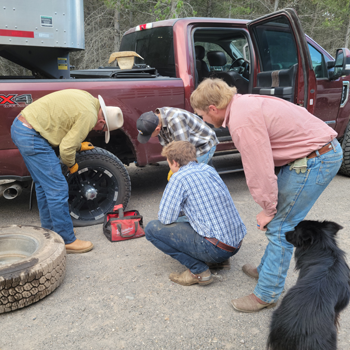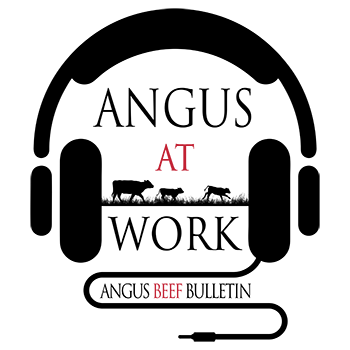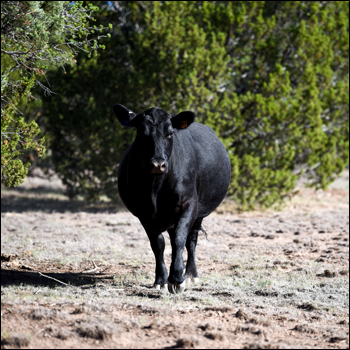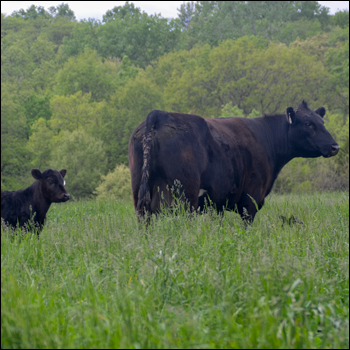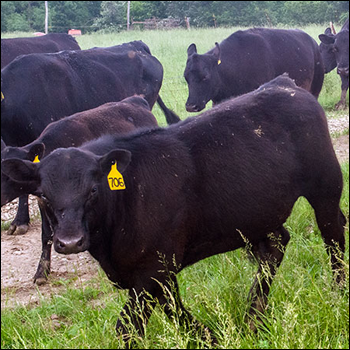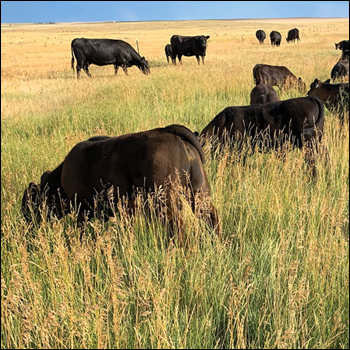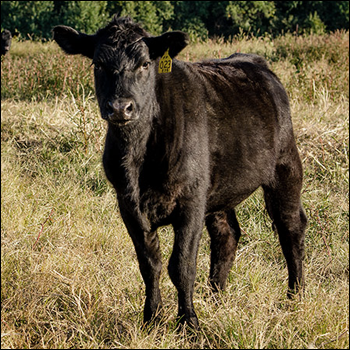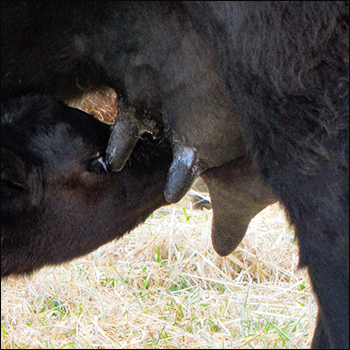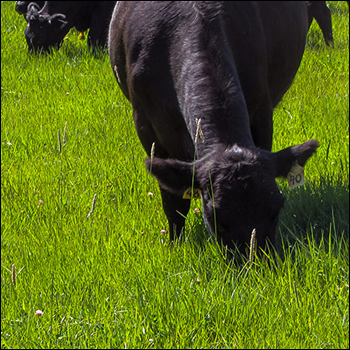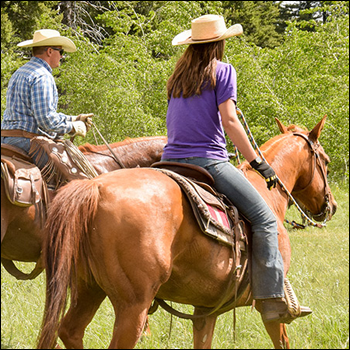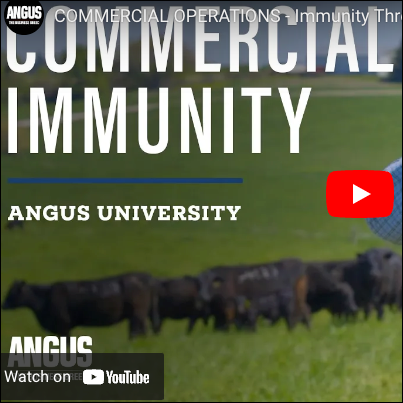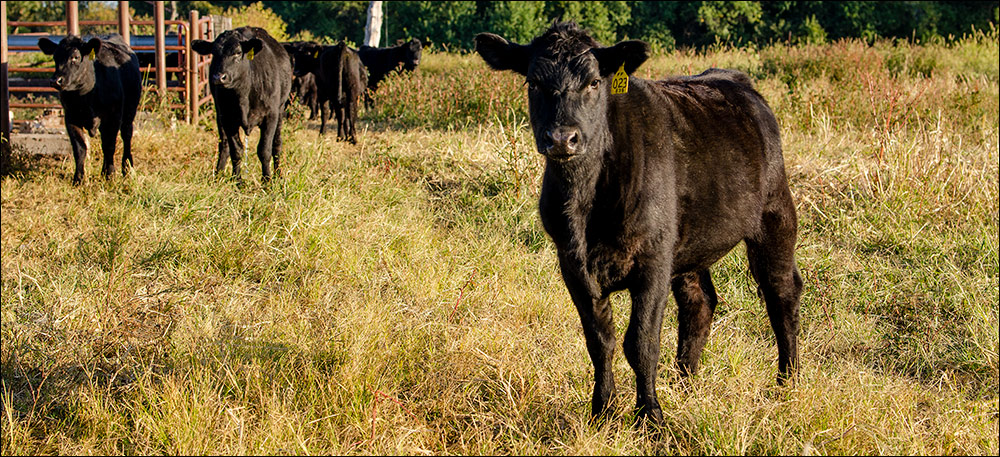
Select Heifers that Stay in the Herd
Colorado cattleman offers selection tips for long-lasting females.
The ability to continue in agriculture is crucial to the future of the beef industry and to individual producers. Reducing input costs and increasing profits is essential. It generally costs a lot to buy or to develop replacement heifers, so it is very important to select good ones that will stay in the herd a long time.
There are many factors that influence longevity in females. Adequate nutrition is important, but it’s important to give that nutrition to fertile, efficient heifers.
Kit Pharo, Cheyenne Wells, Colo., has been breeding for efficient, long-lived profitable cows for many years. He has several suggestions for selecting the heifers that will do the best job.
First, he points out that weaned heifer calves will not generate any income for two years, so you cannot afford to invest much money in their development.
“Rather than place them in a high-input, artificial environment and haul expensive feed to them, we need to treat them like the cows we hope they will become,” he explains.
They should be out foraging with minimum inputs. If a heifer can’t do this, she probably won’t make an efficient and profitable cow.
He suggests retaining nearly all your heifer calves and letting nature sort them. Maintain them through winter on adequate feed, but nothing special — preferably something you grow on your own ranch. Then expose them to a bull for a very short time.
This system allows only your most efficient and early-maturing heifers to advance into the cow herd, he explains. Let your own ranch environment sort out your best replacements. The heifers that don’t conceive in a short breeding season can be treated as stockers and sold for a profit.
“If you breed your heifers to calve when God intended (on green grass), you will be amazed at the high number that will conceive during the first 21 days of breeding season. Even heifers that were cheated during the winter are able to catch up with two to three months of good green grass prior to breeding. If you end up with more bred heifers than you need, you can sell the extras for a profit,” he says. “I suggest letting the buyer select from the group, because he won’t be able to pick out the best ones any better than you.”
No human is as capable of selecting replacement heifers as the environment is, but there are still a few things to consider. Here is Pharo’s list.
- 1. Get rid of the outliers that are too big or too small — “dinks and freaks.” In many herds, this includes some of the tallest heifers.
- 2. Watch disposition. Cull those with flighty and/or nervous dispositions.
- 3. Look at feet and leg structure. Any problems you see now will only get worse.
- 4. Select heifers that shed winter hair the quickest. Cull heifers with dull, dead-looking hair. Hair coat is an excellent indicator of health and adaptability.
- 5. If you still think you need to do more culling/ selecting, look at conformation. Pharo prefers heifers that are shorter, thicker and easier fleshing. The more pounds per inch of height, the better. He culls heifers that look long, because he says that means they are gutless. “Contrary to what show-ring judges tell us, body length is an optical illusion. I also cull heifers that are coarse and/or masculine in appearance,” he explains.
It’s also important to keep some selection pressure on the group you keep. He manages his replacement heifers with the mature cows. They receive no special care.
“We calve the heifers on open range with the cow herd. This continues to force the inefficient and unadapted females out of our program. The sooner you identify the heifers that can’t make it, the better. Every replacement female should have to earn a place in the cow herd,” he says.
With this kind of selection pressure, only the fertile, efficient ones end up as cows and tend to stay the herd a long time without “washing out” along the way. The good, efficient cows that stay in the herd the longest with good structure, a good udder, etc., tend to be the mothers of the heifer calves that make the grade as replacements.
Editor’s note: Heather Smith Thomas is a cattlewoman and a freelance writer from Salmon, Idaho. Photo by Shauna Hermel.

Angus Proud
In this Angus Proud series, Editorial Intern Jessica Wesson provides insights into how producers across the country use Angus genetics in their respective environments.
 Angus Proud: Scott Sproul
Angus Proud: Scott Sproul
Oklahoma operation learned wisdom of moving calving season to better suit their marketing needs.
 Angus Proud: Bubba Crosby
Angus Proud: Bubba Crosby
Fall-calving Georgia herd uses quality and co-ops to market calves.
 Angus Proud: Jim Moore
Angus Proud: Jim Moore
Arkansas operation retains ownership through feeding and values carcass data.
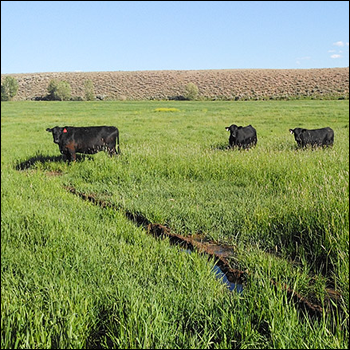 Angus Proud: Stephen Shiner
Angus Proud: Stephen Shiner
Idaho operation rotates pastures in summer and raises crops for winter.
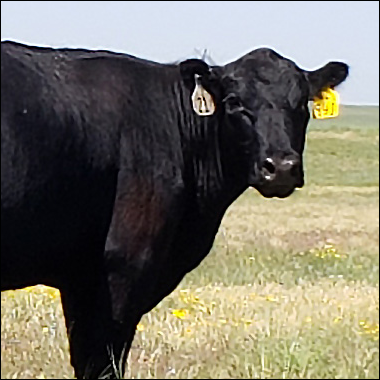 Angus Proud: Brian Nusbaum
Angus Proud: Brian Nusbaum
Angus cattle fit cattleman’s marketing goals and helped him set out on his own.
 Angus Proud: Les Shaw
Angus Proud: Les Shaw
South Dakota operation manages winter with preparation and bull selection.
 Angus Proud: Jeremy Stevens
Angus Proud: Jeremy Stevens
Nebraska operation is self-sufficient for feedstuffs despite sandy soil.
 Angus Proud: Dave Rutan
Angus Proud: Dave Rutan
Angus breeder gets the most out of his bull investment by partnering with opposite calving-season operation.
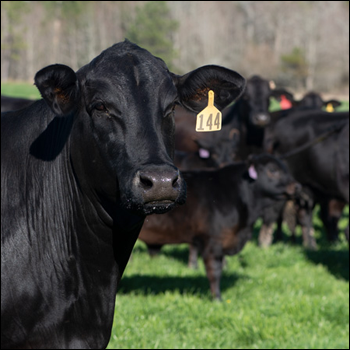 Angus Proud: Nickey Smith
Angus Proud: Nickey Smith
AngusLink helps Louisiana cattleman gain more for his calves.
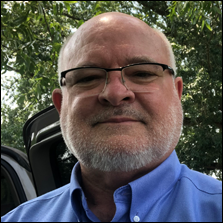 Angus Proud: Mike Moss
Angus Proud: Mike Moss
Operation’s nontraditional start lends to creativity and conservation efforts.
